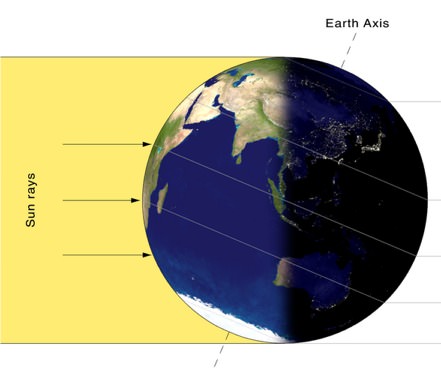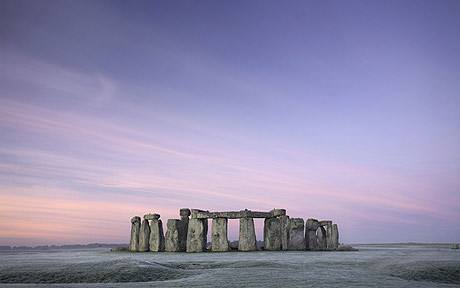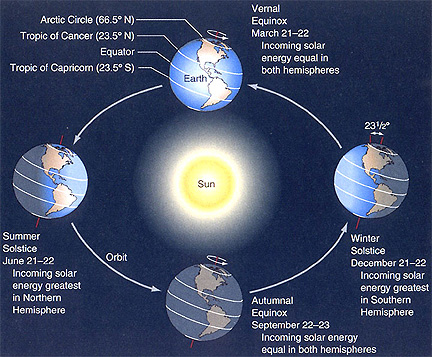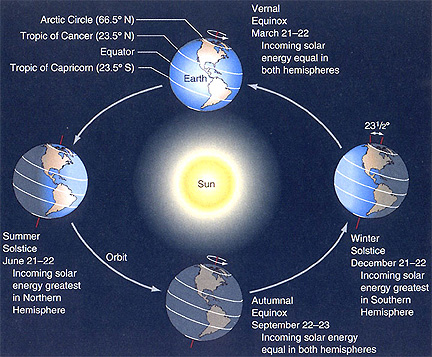[/caption]
Depending on how the calendar falls, the December solstice occurs annually on a day between December 20 and 23. This year, the December solstice will occur at 05:30 UTC (12:30 a.m. EST) on December 22, 2011. While the southern hemisphere is experiencing the long days of summer, the northern hemisphere will have the “winter solstice” – often called the shortest day of the year.
Conversely, six months ago the northern hemisphere experienced the longest day with the summer solstice, with the southern hemisphere having their winter solstice. This is part of a never ending cycle and is at the heart of our seasons.
So, why do we call it the shortest day of the year for the winter solstice and longest day for the solstice in the summer? Do we lose some time off the clock in winter, and in summer do we miraculously gain time on the clock in a bizarre cycle that is imposed by old men in charge of calendars and times around the world? (I used to think this as a small boy…)
The fact is we don’t lose or gain any time; what we actually gain or lose is hours of sunlight. During the winter solstice we receive the least amount of sunlight of the year on that day.
To understand the winter and summer solstices we need to recognize a fundamental fact about the Earth. Earth’s axis of rotation is tilted approximately 23.5° from a vertical axis. This means that as the tilted Earth orbits the Sun during the year, the different hemispheres receive varying amounts of sunlight, as this tilt causes sunlight to strike the surface of Earth at different angles at different times of year.
In the summer, we see the Sun for longer periods of time and it appears high in the sky; the Sun’s rays are more direct and the heat energy is more abundant. In the winter, when the Sun is low in the sky and appears for less amount of time; there is less energy and the Sun therefore heats less efficiently.

If you live near the equator, you won’t notice much difference in the amount of sunlight you receive throughout the year. The biggest noticeable difference is at the poles, where each solstice brings an extreme in the hours of sunlight you receive; in summer the Sun never properly sets for weeks, and in winter it never rises, creating some of the most inhospitable environments on Earth.
I always find the solstices to be magical times of year and look forward to either the longest or shortest days as they are the bringers of seasons, darkness and light.





